My Journey With Aeroflot: Adventures in the Estonian Contemporary Art World
Hunter Braithwaite

Tallinn, Estonia.
“No Russian?” she asked.
I shook my head and pointed again to my ticket.
“No English.”
At which point she pretended to fall asleep, leaving me to crawl over her and get myself comfortable against the window. JFK was still visible when she fell asleep for real, sliding with slow resolution over the armrest and into my airspace.
I was headed to Tallinn to lead a seminar on art writing, a subject I’ve given a lot of time to over the past few years but perhaps not much thought. Luckily, I had hours to catch up on the details before I cleared customs in Estonia.
Somewhere over somewhere cold, a flight attendant came on the overhead. “Congratulations passengers on your international achievement. We are hosting a drawing competition. Please imagine a picture which best describes your journey with Aeroflot. Our crew will come give crayons and paper.”
What with my reason for travelling, there was nobody on that flight better equipped to win an Aeroflot art contest. But I was in no mood for a tournament. Truth be told, I had recently become jaded about the normal ways that contemporary art is written about. My trip, which could have easily been an occasion for boosterism and grandstanding, was doubt-filled. I had planned to use the talk to lay my anxieties on the lectern, to watch them wither and die and myself come out rejuvenated. But here they were, thrust in my face.
I spent the next 15 minutes squirming as I thought of what to draw. Maybe I could draw the wing, with some clouds and icebergs below. I became so nervous that I didn’t notice they’d forgotten to give me my paper and crayons. I looked around. Nobody else had them either, but I was the only one who seemed to mind. The flight attendant came on again. “Thank you all for participating…” My heart dropped. I hadn’t been given the chance to enter, let alone win. “The winners will now parade with their beautiful art.” I craned my neck to take a look at these “winners,” but saw only a line of upheld marching hands grasping paper. “Let’s congratulate our young voyagers once again,” said the stewardess, who began clapping into the microphone. Of course it was for the children. How’d I miss that?
***
Efficient and peaceful, the Tallinn airport was a marked improvement upon infernal Miami International. The cab driver’s English was better than those in Miami. Come to think of it, everything here seemed better than Miami, especially the weather, which was worse than Miami’s, but simply by being bad offered a change and, with that, excitement. “Nothing is harder to bear than a succession of fair days,” Goethe says. Luckily, with its near-constant cloud cover and regular showers, I didn’t have to worry about that in Tallinn.
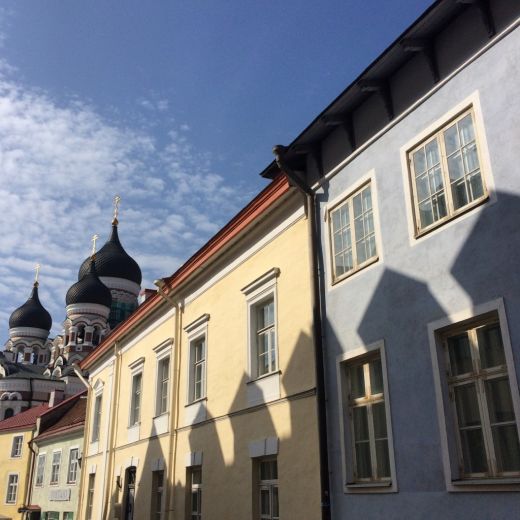
Tallinn’s historic Old Town, with the Alexander Nevsky Cathedral in the background.
After dropping my bags in my room at the L’Armitage, I met Kadri Laas for lunch. Kadri worked at the Estonian Contemporary Art Development Center (ECADC), which supports Estonian art and artists both locally and around the world. Since 2012, the ECADC has helped grow the small community through various activities, including a gallery night, a development class for local gallerists, and visiting curators program, which is why I was sitting at that table, over beet soup and some sort of fish, going over the next few days’ itinerary. In addition to the seminar, Kadri had lined up studio visits and scheduled appointments at some of Tallinn’s cultural centers. The picture of the city that emerged over lunch was both unique and not: an art community stretched between local and global concerns. How to exist in a regional or worldwide network of fairs and biennials? How to develop a local, sustainable collector base? And most importantly, supposing that the city in question is not London or New York, how to keep your artists from moving to London or New York?
After lunch, I stumbled over slick cobblestones as the Old City corkscrewed down a hill, away from a church built many centuries before. Chinese tourists gasped at the ancient steeples lancing the fog. The seagulls floating in from the harbor reminded me of Miami, another city asking many of the same questions.
In the morning we met at the Estonian Academy of Arts’s Department of Art History building for the first section of the seminar. It was an important setting. Tallinn’s contemporary art scene revolves around the Academy, both as an incubator of thought and community, and as a physical space. Problematically, there hasn’t been a physical space for years. The Academy’s main building, once located in the center of town, was demolished in 2010 in order to make way for a new, better building, which was supposed to be ready two years later. Legal hurdles that probably should have been addressed beforehand turned those two years into three, then four, then…you get the point.
The seminar was called No Friend, No Enemies, Only Neighbors: Art Writing and Community Building. In my experience, the small community, the node, the outpost is often the true barometer, yet the big publications focus, understandably one might add, on the big scenes. How can local writers address this imbalance? By writing, of course. But the more difficult question follows. How do you write about your friends?
I maintained that the problems of nepotism, conflicts of interest, and grudges were all secondary, and would disappear simply by fiddling with the mechanics of writing. I started off with a quote from Emerson. “In good writing, words become one with things.” Art writing especially. We talked about the lack of audience, and of money. I said that most art writing was boring, and that was the root of our troubles. It goes without saying, right? Wrong. One of the sharper students, with a face I don’t remember because she didn’t come to the second half of the seminar, raised her hand. “Why does art writing have to serve the logic of entertainment?” Oh lord. If a review could be as tense, as sweaty, as funny as my awkward attempts at defending my point, well, we’d have nothing to worry about.
***
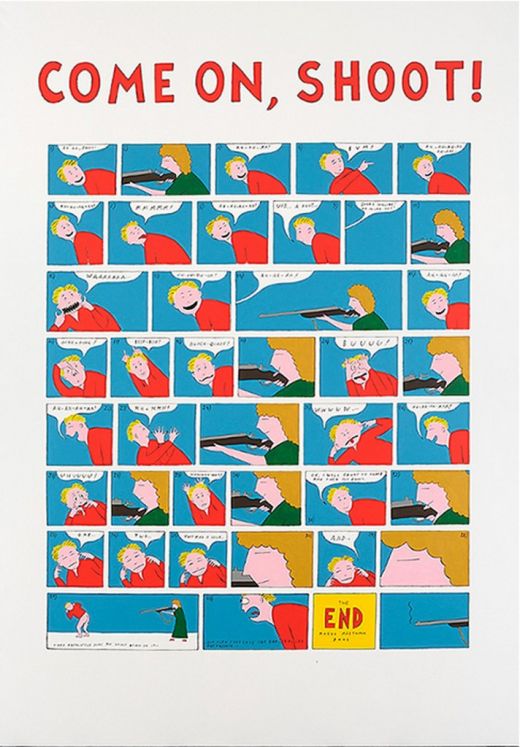
Marko Mäetamm, COME ON, SHOOT!, 2013. Acrylic on canvas, 3.00m x 2.00m.
The pieces had a type of gallows humor found elsewhere in the community. For example, take the Viru Hotel, built in 1972 for foreign tourists. The KGB had an interrogation room in the basement. The locals knew about it of course, and began to joke that the Viru was the tallest building in Estonia. Even from the basement you could see Siberia. When remembering that much of Estonia’s avant-garde was indecorously shipped to the Gulag, the joke darkens like a winter afternoon.
We then took the tram out of the city center to Flo Kasearu’s Majamuuseum (House Museum). The house had belonged to her grandparents before the government moved them into apartment blocks. After the end of the Soviet period, they were allowed back, but not before thieves had stripped out all of the metal and furnishings, making the house unlivable.
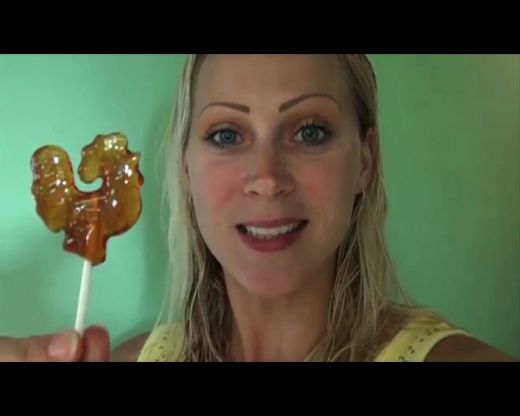
Flo Kasearu, Estonian Dream, 2011. Video-DV- PAL, 15’ 53.”
The next day, Kadri drove her Volvo out to the picturesque southern suburb of Nõmme, where Kris Lemsalu had recently set up a studio. In Lemsalu’s sculptural work, the textures and connotations of porcelain, sleeping bags, clumps of fur, and other materials swirl together in a teasingly abject mélange—a sleepover gone wrong. Since she worked with porcelain, I asked if the distinction between art and craft was problematic in Estonia. She told me that the real debate had to do with contemporary art vs. art made today by Estonian artists. As we spoke, two presents were unfolding: a local, traditional one and then a global one. In the States, cultural is not unified, but it at least stacked in a hierarchy of taste and supposed worth. Here, there were two, equally entrenched camps. Two ways of now.
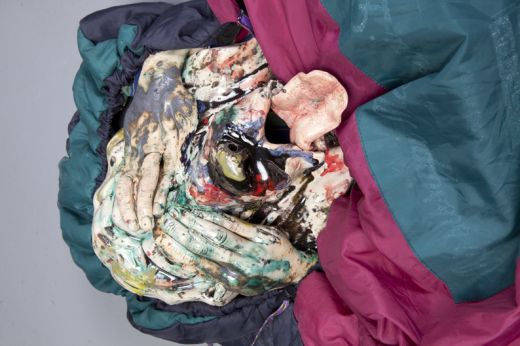
Kris Lemsalu, Phantom Camp, 2012. Ceramics, sleeping bags.
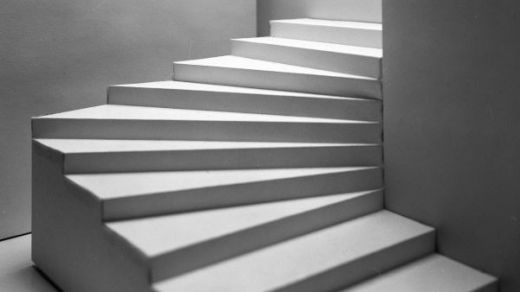
Dénes Farkas, Evident in Advance, 2013. Detail.
Like many of Estonia’s most interesting young artists, Merike Estna lives abroad. In London, she rebels florally. The pastel colors that she works with, so inoffensive in a Western context, were considered bourgeois and decadent during the Soviet period. And the way she displays her paintings—tilted, piled, slashed and blown by a rotating fan—is just as heretical to entrenched sensibilities. That morning she was going over gallery layouts for two exhibitions she was planning—a show of her own work and a group show she was curating. They would be hung in the same gallery, paintings stacked on top of each other.
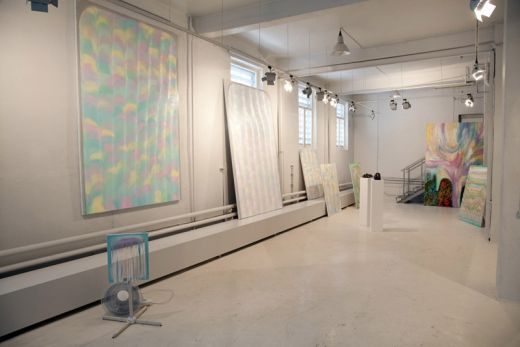
An installation shot of Merike Estna’s A big painting and a small painting at Temnikova & Kasela.
Besides being the land of Skype, Tallinn is also famous as the backdrop for Tarkovsky’s “Stalker,” part of which was shot in the factory now housing the Contemporary Art Museum Estonia (EKKM). At the time of my visit, the 2014 Köler Prize, the country’s most respected art contest, was about to come down. As Kadri and I entered the Zone, binaries dissolved. The dueling worlds of contemporary art and art made by normal Estonian artists, between local culture and global influence, and between the current Eurozone moment and Soviet history all collapsed into each other. What remained standing was exceptionally strong art that responded to international conditions and was supported by local institutions.

Jass Kaselaan, The Square of Dolls, 2014. Concrete.
The winning installation by Tallinn-based artist Jass Kaselaan filled an upstairs gallery. One entered a room full of massive concrete busts titled “The Square of Dolls.” The giant heads, with wide-open eyes and rough, industrial flesh, are nostalgic yet ultimately look to the future. Tallinn is old yet young, rubble-filled but in the process of making something profoundly interesting, off the beaten path but a prototype for a new sort of art city.
On the final day, I sat over another breakfast of smoked salmon and assorted gloop, thinking back to one of the questions from the seminar. How can you write about a community in such a way that nurtures growth, that expands the audience? I watched the pensioners and Chinese jockey for buffet position as I began to make a list. Forms art writing might take: a dirty joke, a wish list, a suicide note, a graduation speech, a fortune cookie, an in-flight magazine.










